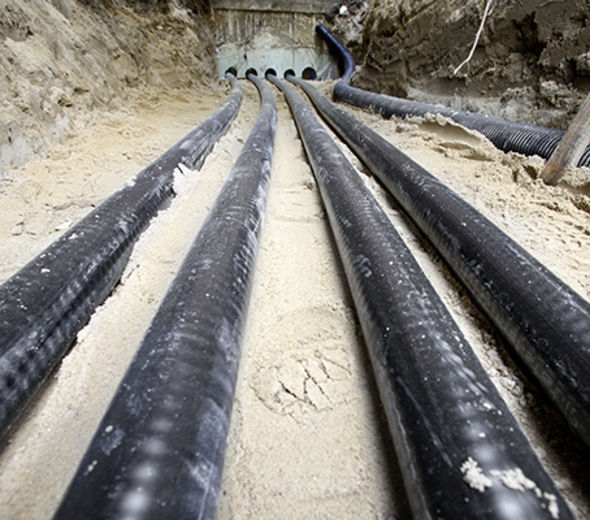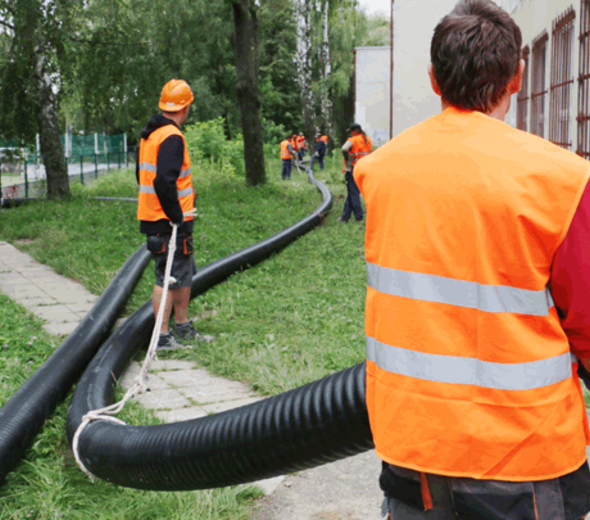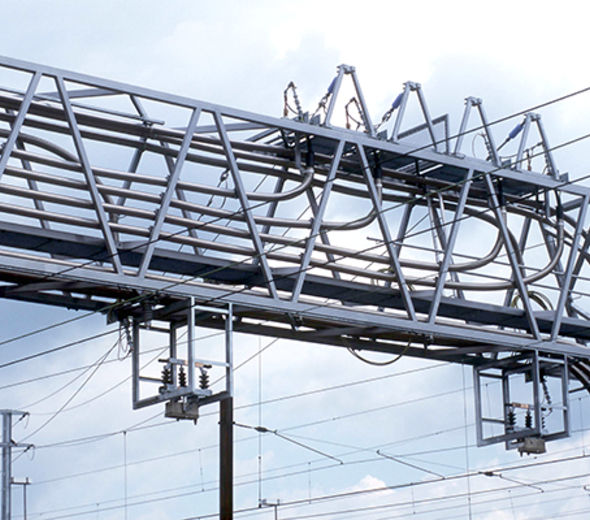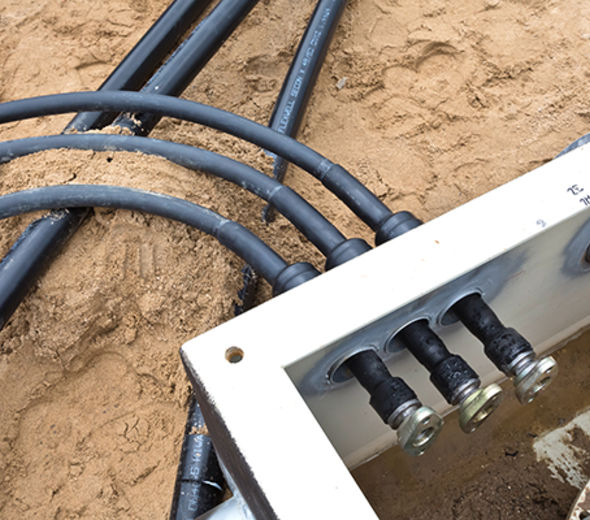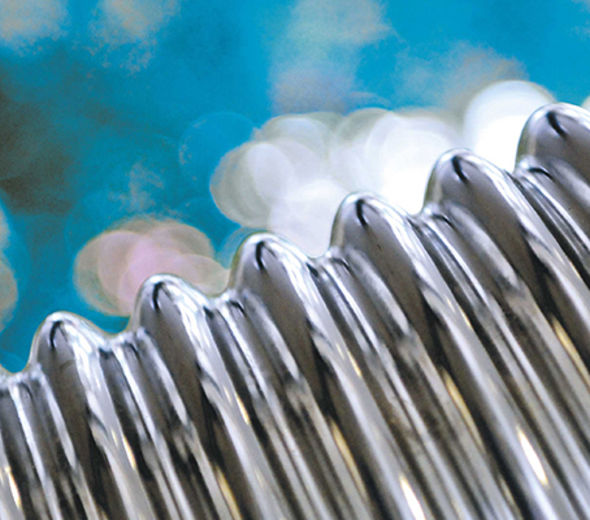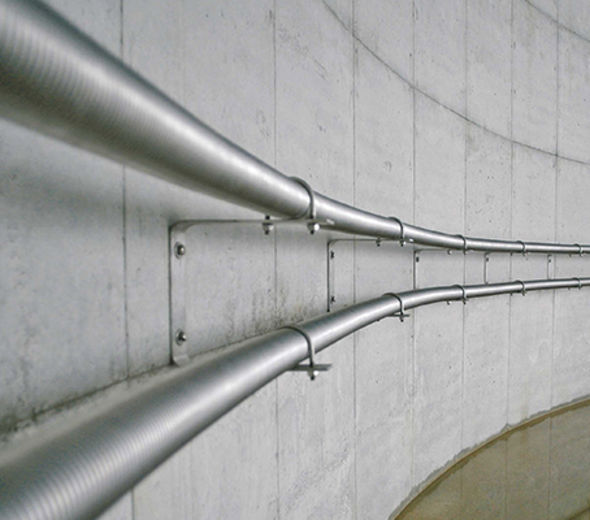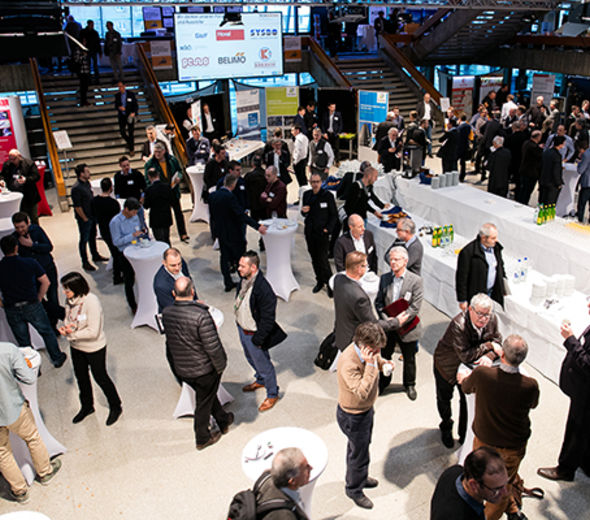In each specific case, the type of pipe is always determined by the medium flowing through the pipe system. In the context of water and waste water pipes, the following question arises as to their function: are they primarily used for heating and cooling or simply for transportation (or discharge)? Examples of the latter include the provision of drinking water using aluminium composite pipes, the discharge of service water in sanitary facilities and the use of pipe systems for the return flow into the sewer system. In addition to pipes for hot, cold, service and waste water, various other media also flow through pipe systems. Here we distinguish between gas pipes, oil pipes, pipes for industrial products and pressurised pipes, among others. To ensure we maintain an overview of all the specifications, including the material properties, media, dimensions and so on, we organise our range into various primary categories. These are geared toward the respective application areas.
Local and district heating – Flexible, pre-insulated pipe systems with excellent insulating properties are usually installed in this area. However, the large-scale commercial expansion of district heating networks initially began with the use of rigid steel pipes. Nevertheless, the tide turned with the advent of technological advancements in plant engineering and numerous new research findings. In recent decades, plastic pipes have increasingly been chosen for use in the build-out of the supply infrastructure. In many cases, this flexible alternative achieves even better measured values for insulation performance. Still, there are certain advantages to using rigid pipe systems with a stainless steel or other solid metal medium pipe compared to pipework made of PE (polyethylene) plastic. Therefore, it always remains a case-by-case decision as to which pipe system is ultimately the better choice in a direct comparison.
Hot and cold water – Here we only offer flexible, continuous systems. They also have distinct property profiles: Some are certified for drinking water, others are designed with oxygen barriers and still others have integrated frost protection or heating tape. What is important depends entirely on the intended use and the associated requirements. Is the focus on the impeccable quality of the supplied water or the temperature of the medium? If the latter is the case, then the system is equipped with high-quality insulation made of polyurethane (PUR).
Industrial plants – Ensuring absolute safety is crucial when it comes to pipe systems designed for industrial processes. Such systems are all uncompromisingly reliable when it comes to conveying media that are in some cases potentially hazardous to the environment. BRUGG Pipes offers single-walled and double-walled, rigid and flexible pipe systems. A wide range of safety precautions are also taken to ensure the well-being of employees and the smooth operation of the plant, including the monitoring of overpressure and underpressure leaks. This is because the pipes often transport liquids and gases that are environmentally hazardous and toxic.
Special safety mechanisms are also required for pipe systems for petrol stations and tank systems: The pipe systems designed for the transportation of gas, oil and other fuels, as well as highly flammable media, are equipped with effective corrosion protection and are further safeguarded by highly sensitive monitoring technology. These special precautions, combined with weld-free design, make such systems extremely safe. For safety reasons, welding work is not performed during installation due to the presence of highly flammable media. Instead, a flameless connection technology is available specifically for these pipe systems.
Cryogenic applications – These pipe systems are both flexible and safe due to the incorporation of bendable corrugated stainless steel pipes. Additionally, they are vacuum-insulated and pre-assembled. The enhanced insulation, that is, the combination of vacuum and insulation, prevents the transfer of heat to the medium. This is important because cryogenic, liquefied gases are transported in the special pipes at temperatures as extremely low as -200 degrees Celsius. Depending on the application requirements, it is possible to implement the flow and return in just one pipeline. In order to optimise the implementation of the order, there is also flexibility in deciding whether the BRUGG Pipes line should be installed underground or above ground. The ready-to-use promise of our pipework for cryogenic media is completely independent of flow direction and installation, as all pipe systems in this category are pre-assembled in the factory. This involves cutting the pipes to the correct length, inspecting and welding the connections and establishing a vacuum. As everything is ready, installation can start immediately after delivery to the construction site.
Bioflex fermenter heating – Our BIOFLEX pipework and its accessories are specifically engineered to heat biogas fermenters. The system can be connected to either the outer or inner wall of the digester and provides the plant with direct heat transfer during the conversion of biomass into biogas. The heating system provides perfect environmental conditions for the microorganisms. Only on this basis is it possible to efficiently produce biogas, which is then burnt and converted into electricity and thermal energy.









